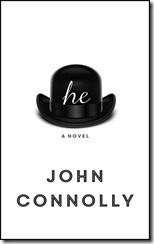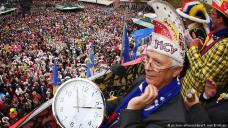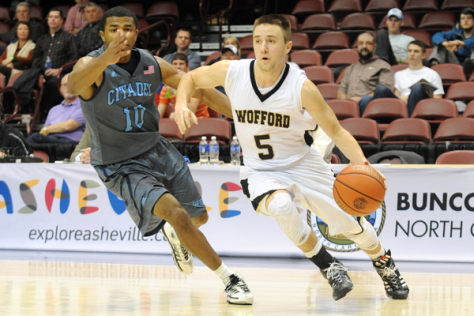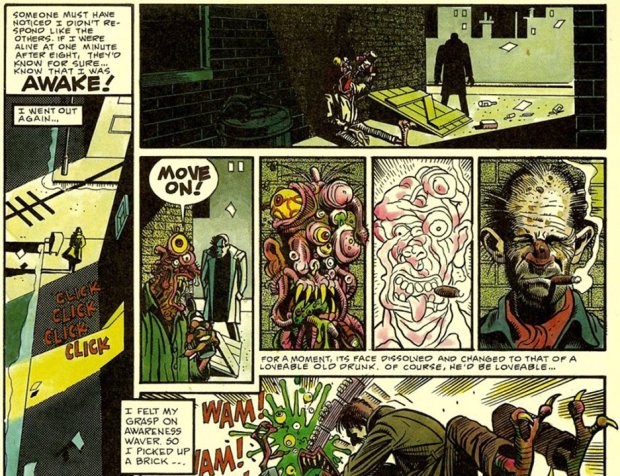 |
he
John Connolly (www.johnconnollybooks.com) Hodder & Stoughton (www.hodder.co.uk) £16.99 |
In Santa Monica’s iconic Oceana Apartments, an old man lives out the last days of his life, reminiscing on the many years that brought him to this point. Furthermost in his mind is his best friend, a man he knew as Babe, and whom he loved like a brother. This is the story of a life in the spotlight, the story of the golden age of the Hollywood studios and, most importantly, of a friendship that would endure until death separated them, a friendship that translated to the screen and made this pair one of the greatest comedy duos the world has ever known. The old man is none other than Stan Laurel, and this is his story.
First of all, yes, this is the same John Connolly that produces the dark, supernatural-tinged, Charlie Parker novels and, no, this is not an attempt to turn Laurel and Hardy into derby-hatted amateur sleuths. An obvious labour of love, he tells the life story of Stan Laurel, from the vaudeville stages of England to his final, reclusive years in the Oceana Apartments. It’s a very different beast to Connolly’s other novels, but proves that, regardless of subject matter, John Connolly has the ability to grab the reader in the opening pages, and hold them, engrossed, in the palm of his hand, long past the final word on the final page.
Where is the plot?
The answer is that there is no plot: plots are for the stage alone. There is no plan, no manifest destiny. There is only a series of events, some connected, some discrete, and this will be called a life. Destiny is for gods, and he is just a man.
He is not Chaplin.
Alternating between an old man reminiscing, and a chronological account of his life, he provides intimate insight into the life of a screen legend. The picture Connolly paints is of a comic genius – the brain behind some of the funniest visual gags ever to be filmed – who is so insecure that he spends his life comparing himself to one of his best-known contemporaries, fellow Englishman Charlie Chaplin. For Stan Laurel, the comedy is paramount, with the performer little more than a vehicle to showcase it to the mythical Audience. This is why his on-screen partnership with Oliver “Babe” Hardy worked so well, and why Hardy – in Laurel’s mind a much better performer – usually ended up with the lion’s share of the visual gags.
The on-screen chemistry between these two men is well-known by generations of the Audience. What is surprising is the off-screen chemistry that developed between them, in which the roles were almost reversed, Laurel the duo’s mouthpiece – constantly petitioning, and failing, for better pay and more control – while Babe Hardy comes across as something of a gentle giant, who will support his friend regardless of the consequences. And in many ways, this is the crux of Connolly’s story: the legendary partnership, and the friendship that drove it forward and made it as successful as it was.
There is plenty of tragedy in Laurel’s story, as might be expected. A womaniser who ends up losing most of his money in alimony payments and divorce settlements, Laurel can never quite break free from Chaplin’s shadow, and while studio boss Hal Roach rakes in the proceeds of their highly successful movies, Laurel and Hardy are paid little more than peanuts, forced to renegotiate their contracts individually, despite the fact that they were, very much, in it together. Connolly’s Laurel is Pierrot personified, and his story will resonate with even the stoniest-hearted reader.
What Glen David Gold’s Sunnyside did for Chaplin, John Connolly’s he attempts to do for Stan Laurel and does so with aplomb. The story uses a very similar narrative style to Laurent Binet’s HHhH, short sharp chapters that tell the story from start to finish with little embellishment. And it’s a good thing, because once you start, you’re going to be there for the duration. Where Binet agonises over the inclusion of this anecdote or that, Connolly is very much aware that what he is creating, while based on a real person, is a novel, a piece of fiction, an entertainment, so he has no qualms in speculating about Laurel’s state of mind, or in inventing conversations that progress the story, or explain Laurel’s actions.
As if doing justice to a much-loved icon wasn’t enough, Connolly also set himself a more technical challenge with this book, a challenge that is encapsulated in the novel’s title. Stan Laurel is never named within the narrative, always referred to exclusively as “he”. This exclusivity works both ways: every instance of the word “he” refers to Stan Laurel; all other characters are referred to by name throughout. It sounds laboured, but the writing style lends itself to the constant repetition that this requires, and creates something special, a male-dominated world in which Stan Laurel stands out from the crowd.
In short, he is a thing of beauty, a brilliantly crafted work that provides a wonderful insight – however fictionalised – into the life of an instantly-recognisable legend. While it can’t have been easy for Connolly to sell, or for Hodder to market, the end result is no less than awe-inspiring. Connolly’s portraits bring Laurel and Hardy firmly to life, reawakening a long-dormant love of their films (in this reader, at least, who now has a desire to pass on the genius to the next generation) and providing insight not only into Hollywood’s Golden Age, but also into the mind of one of our great comic treasures. A stunning achievement from one of Ireland’s greats, he will undoubtedly expose a much different, much wider audience (or should that be Audience?) to John Connolly’s writing. You won’t want to miss it.
Share this:- Share





